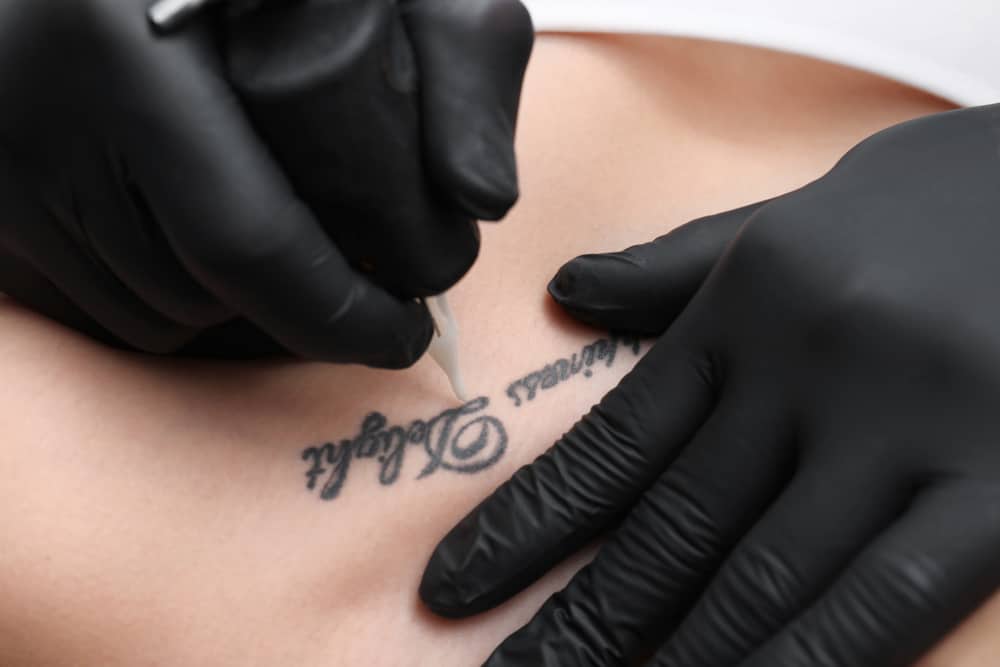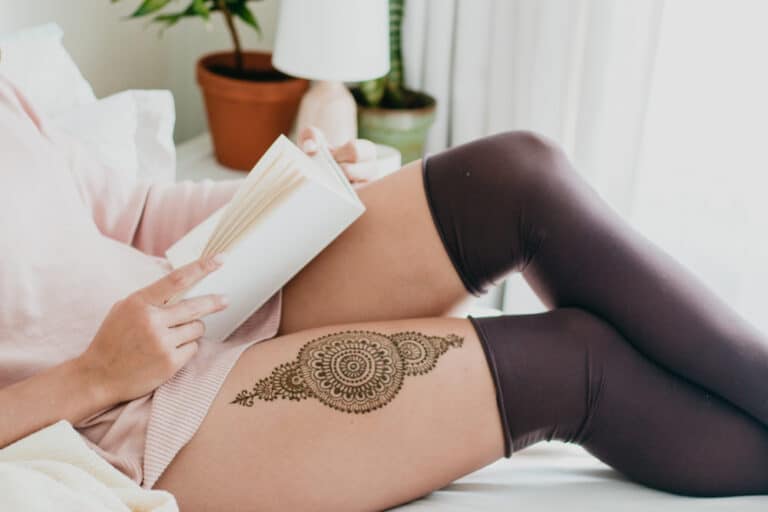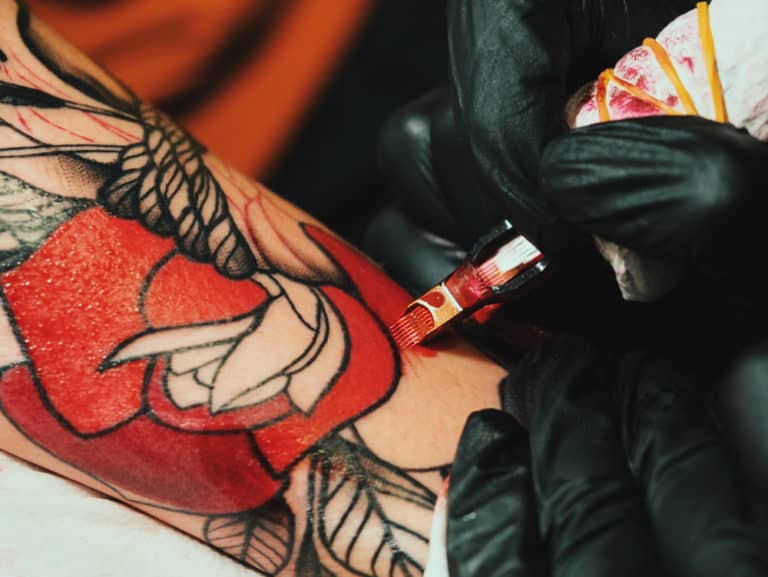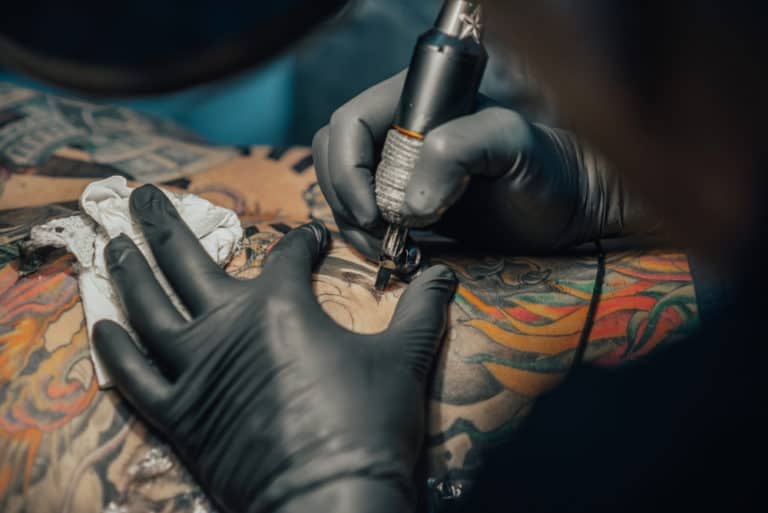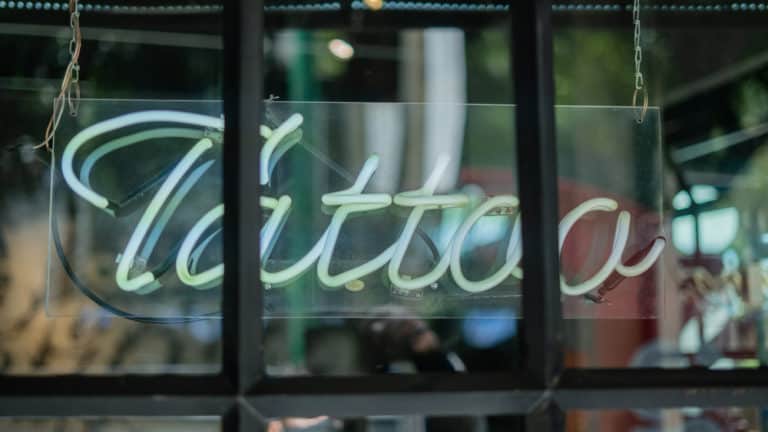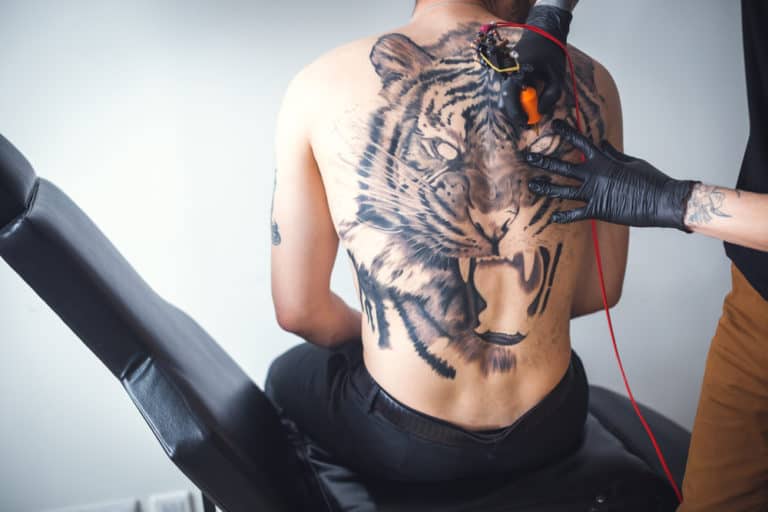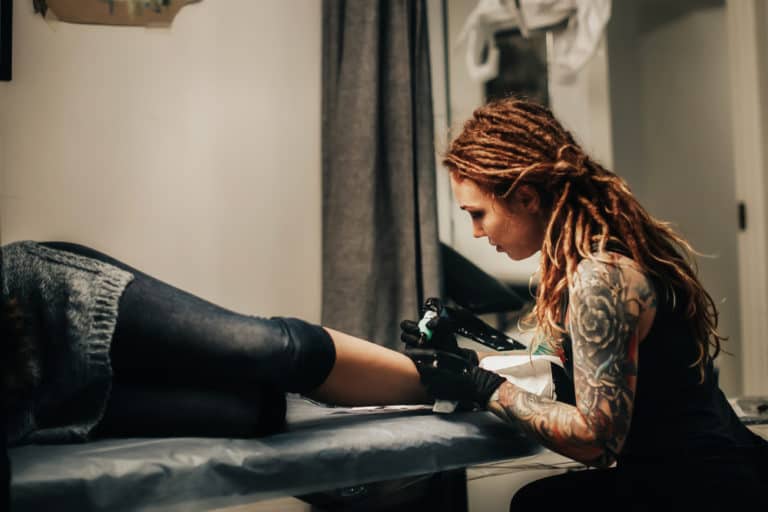Do Collarbone Tattoos Hurt?
You have probably seen a lot of people sporting multiple tattoos in different areas of their body and wondered how much each hurt. I had one at the back of my shoulder and one at my ankle, which doesn’t hurt a lot, but it’s still felt. So, what about other areas closer to the bones, especially the collarbone?
The collarbone is one of the most sensitive parts of the body and is said to be one of the painful areas to get a tattoo. This is because it sits right on the bone, and there is not much flesh. It might not be too bad for those who have high pain tolerance.
If you’re thinking of getting a collarbone tattoo, what are things you should consider? And are there any other parts where it is ideal?
5 Things To Consider Before Getting A Collarbone Tattoo
Tattoos are permanent, and getting one is a big decision to make. Factors such as placement and visibility should be considered, and if the location is going to be on the collarbone, here are five things you should think about before getting one:
1. Tattoo Placement
So now that you have decided on a collarbone tattoo, it’s time to think about the position, if it would be on the bone, under, or above the bone. Of course, on the bone would be the most painful of the three and the most challenging.
Your tattoo design will play a huge role in the placement of your collarbone tattoo. So before choosing, you can opt to sketch or outline your design on the different areas of your collarbone to see which one works best.
2. Design
As mentioned above, the design of your tattoo is vital in terms of placement. It’s an art, and you should carefully consider how it would fit around your collarbone.
The design can be anything from words or phrases using delicate fonts, flowers, butterflies, feathers, or any other symbols that means something. Some also extend the design to the neck and chest area but be careful as not all designs are applicable if placed in your collarbone.
Each of us has choices, and some may choose dainty designs, while others go for fierce. The collarbone is a great area to make a statement or highlight the body part, so choosing the design that works best around your collarbone should be a factor to consider.
3. Level Of Pain
How much pain do you think you can handle if it’s your first time?
Many people believe that getting a tattoo is painful no matter the area in the body it will be placed. That’s what I thought at first, but the pain level really depends on your tolerance and the part of the body you want it done.
And if collarbone is where you want it, consider the pain you can tolerate before you move forward with the decision. A good recommendation, especially for first-timers, would be to get one on the least painful area such as arms or thighs (with thicker flesh) first so you’ll know the process, and you’ll get the feel of getting one done.
However, it’s just not about the placement where one can say it’s painful. Your tattoo artist can also contribute to the level of pain you might experience during the process as they can be heavy-handed, so before going in, do your research and check for reviews before choosing where to get your tattoo done.
4. Visibility
If you have chosen collarbone as the area to get a tattoo done, you’ve probably thought about the attention you’ll probably get because it’s very much visible. You might be okay with that, but this factor is another thing to consider for others.
One can’t easily hide a collarbone tattoo unless it’s the winter season and you’re wearing layers of clothes or turtlenecks. So if you’re someone who does not object to gathering attention, a collarbone tattoo should not be a problem for you.
However, if you’re a person who still wants to keep some mystery and doesn’t want to flaunt your tattoos at all times, this might not be an ideal area to get one. It’s a lifetime commitment that you should stick to.
5. Tattoo Artist
One of the most important things to consider before getting a tattoo is finding the right artist or studio. Many people decide in the spur of the moment and enter salons without much thought and regret later.
Now that you have decided on the placement and design of your tattoo, you need to take time to consider where to get it done. Ask around and check the artist’s work. Even if you’re a beginner, you can already tell what good quality is and what is not. A tattoo should be smooth and not jagged.
If you have friends who have tattoos, ask them for some recommendations, they would be a great resource of personal experiences for getting a tattoo. They might also know some good tattoo artists or studios that you can check out.
How Long Does The Pain Last After Getting A Tattoo?
When needles penetrate the skin a couple of times per second, it can cause light trauma. Even though the needles do not pierce deeply, they can still cause pain and soreness for a few days after it’s completed.
After completing a tattoo session, it is expected to be sore for at least one to two weeks, depending on the size and area where it is done. Some might not evenly heal, and soreness is prolonged, so manage your expectations, especially for collarbone tattoos. It usually feels like a sunburn, so be careful not to touch it frequently.
How Long Does It Take For A Collarbone Tattoo To Heal?
Collarbone tattoos will take about three to four weeks to heal, but for the under the skin to heal, it can take up to six months to fully heal, considering the size of your tattoo.
The healing process of tattoos is pretty much the same. And just like any other area in your body, collarbone tattoos shouldn’t take long to heal unless you’re not following the aftercare steps to ensure that your tattoo wouldn’t get infected.
Here are the aftercare tips for your tattoo:
- Do follow your tattoo artist’s instructions regarding caring for your new tattoo.
- Do not remove the wrapping of your tattoo for a few hours so it can absorb ink or other fluids that might leak out.
- Be careful when removing the bandage. It’s an open wound, so you have to treat it as such. Before touching it, make sure that you have clean hands, and carefully wash it with lukewarm water and a fragrance-free soap.
- Keep it protected by using an aftercare ointment; remember to have clean and sanitized hands before the application.
- It needs air for faster healing. Leave the area uncovered so that it can breathe. For men, you can go topless inside the house whenever you can, and for women, you can opt to use tube tops or bandeaus and not get any clothes in contact with your tattoo.
- If you’re going out, be careful not to expose it from the sun, but never use sunscreen until it’s fully healed. Use loose clothing so it won’t stick to your skin.
- Avoid swimming or soaking in a tub until it’s completely healed.
- Just like any other healing wound, you might feel itchiness, so avoid scrubbing or scratching the area to avoid any infection.
- For any signs of infections, it is best to visit a doctor or reach out to your tattoo artist.
After getting a collarbone tattoo, here are some special considerations you need to know:
- You should avoid using heavy shoulder bags, backpacks, or totes for the first two to three weeks after getting a tattoo. These things can cause friction and can infect the area.
- For women, it is necessary to wear a strapless bra during the healing process and wear tube tops as often as you can for faster healing.
Signs Your Tattoo Is Not Healing Properly
If you’re seeing the following signs, be sure to visit your doctor for proper treatment.
- Redness. For the first few days after you get inked, you will still see redness and puffiness around the wound, but if redness persists, it’san early sign that your tattoo is not healing properly.
- Scabbing. This sign is a normal occurrence for a healing wound, but monitor it for a few days, and if it’s accompanied by discolouration, it is time to get it checked.
- Fluids ooze out of the tattoo. This sign is what you don’t want to see while your tattoo is healing. If you notice fluid emanating from the wound, it is a definite sign of infection, and you should go straight to the doctor’s office instead of your tattoo artists.
- Swollen skin. You’ll see puffiness a few days after getting tattooed, but if it hasn’t gone down and the surrounding skin is still inflamed, it could be a sign of allergic reaction to the ink.
Least Painful Areas To Get Inked
Many factors determine the pain level of getting a tattoo. Your skin’s location, size, and sensitivity can make it more or less painful. People may feel more intense pain when they get their tattoos because of these factors.
Many people opt to get tattoos lower down their back due to the lack of nerve endings in these areas. This means that your tattoo will cause less pain, but you could still choose an area with less sensibility if you want to avoid any pain at all.
If you’re still unsure of getting a collarbone tattoo because you’re worried about the pain, here is a list of the least painful areas to get inked:
Inner Wrist
This part may come as a surprise because it feels like getting a tattoo on your inner wrist would be painful because it has thin skin. However, this area is considered the least painful, excluding the sides where the artist can hit a bone that would be painful.
Forearms and Biceps
Sleeve tattoos are a popular trend nowadays. Forearm tattoos cause minimal pain, and if you consider this area for a tattoo, ensure that you avoid the bony area on your wrist.
Biceps are also a runner-up in terms of the least painful area to get inked, and it is usually what first-timers choose since it has thick flesh, which helps absorb the feel of needles piercing through the skin.
Calves
The calves are another great area to get tattooed. It has a lesser number of nerve endings, and it’s surrounded by thick skin that helps lower the pain while getting inked.
Outer Thighs
This area is also a popular one, especially among women. Aside from being less visible, it is also least painful than your inner thigh, where it has more nerve endings and will cause pain.
Shoulders
Shoulders, just like the other areas mentioned above, also have fewer nerve endings that the session could just be a breeze. I’ll also consider the back of the shoulder painless. When I had mine done, I have only experienced numbing sensations, but I could say that it’s not at all painful.
Conclusion
Tattoos are permanent markings that you’ll need to consider all the risks and benefits before getting one. Although there are now processes for tattoo removal, it will cost you about ten times compared to getting one applied, and it’s not an immediate result as it might take months before the removal process is complete.
If a collarbone tattoo is what you prefer, your pain tolerance is a great factor, so be sure you can handle it before getting one done. Be sure that your design is carefully picked, and you’ll get it done by a tattoo professional so that you won’t regret your decision in the future.
It’s not a spur-of-the-moment decision because many factors are involved in getting a tattoo, especially in a delicate place like the collarbone.
Some of my favorite designs, tattoo books, and aftercare products, selected for you
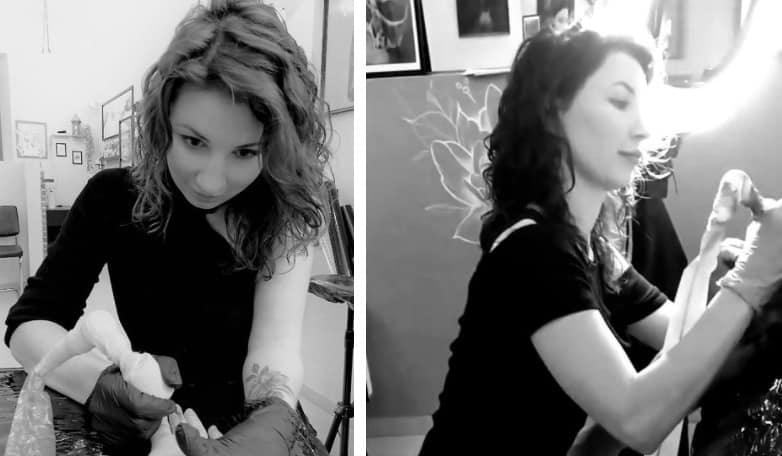
Thank you for reading my article, I hope that you have found it helpful. If you would have trouble finding ideas for your tattoo, wonder what is meaning of design that you have found or what to buy for aftercare, to make sure that your tattoo will be healing quickly and easily, here are some of my favorite products in one place, hope that this will also help.
Design and tattoo ideas
For some ideas you can have a look at those 3 books with hundreds of designs that I use with my clients, they are available on Amazon for Kindle or in classic, paper version (links below):
- Great Book of Tattoo Designs, Revised Edition: More than 500 Body Art Designs (Fox Chapel Publishing) Fantasy, Celtic, Floral, Wildlife, and Symbol Designs for the Skin by Lora Irish
- The Big Book of Small Tattoos – Vol.1: 400 small original tattoos for women and men by Roberto Gemori
- Tiny Tattoos: Over 1,000 Small Inspirational Artworks by Rebecca Vincent.
Tattoo meaning
If you would like to read more about the meaning of different tattoo styles and designs before you will decide what you would like to have, I can recommend a book that was really useful for me when I was starting my tattoo adventure – it’s “Conscious Ink: The Hidden Meaning of Tattoos” by Lisa Barretta (through the link you can find it on Amazon for around $10).
Tattoo aftercare
The skin at the tattoo site often dries out. To prevent it and speed up healing for my clients, I usually recommend one of those tattoo aftercare balms (you can find them on Amazon):

